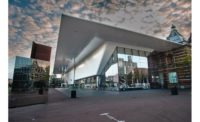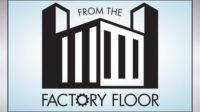Temporary cooling can help ensure your company doesn’t see permanent losses.
More and more data centers are being commissioned to keep up with the growing boom of internet data. However, older aging data centers are increasingly requiring routine maintenance to sustain process operations. So what to do when a building’s vital cooling system must go offline in order to make repairs? Many data center operators are turning to temporary cooling solutions for their plan B.
Temporary cooling equipment providers can get chillers, cooling towers, and air conditioners into place very quickly to meet immediate data center cooling system requirements. In many situations, these engineered temporary solutions also help data center managers improve their balance sheet by avoiding high-cost capital expenditure (CAPEX) commitments on short- to mid-term duration needs.
When considering a temporary cooling system, it is important to work with a provider that understands how to engineer a system that seamlessly ties into the existing cooling process and can match equipment specific to the environmental demand. Each data center cooling system is unique and has different needs and characteristics (e.g., water-cooled or air-cooled) — there is no such thing as one-size fits all per the example below.
Staying in the Black
For one major information service provider’s data center, a facility which processes hundreds of thousands of key business and retail transactions hourly, every 10 minutes of downtime equated to a potential loss of more than $200 million. The facility was preparing for an upgrade and needed a solution to support its operations during the outage.
The project timeline was both tight and vitally important encompassing Thanksgiving through Black Friday. The work would need to be performed while no one was present during data center operations, which also happened to be the kickoff to holiday shopping season. Peak transactions during the outage would be highly undesirable and would likely create nationwide notoriety for the customer.
The existing cooling system needed to be shut down in order to increase capacity for an expansion. The customer worked with a temporary cooling provider to design a system that could match its current needs plus handle the increased load — delivering 1,600 tons of cooling and a high degree of redundancy.
The solution incorporated three 1,000-ton chillers, three 1,000-ton cooling towers, and three 1,250 kW generators. A standby system was set up so that in the event of a failure, technicians could change out any piece of equipment in a matter of minutes. The custom design proved successful and ensured the non-stop availability of the facility’s operations while delivering foolproof contingency backup.
The data center cooling solution was able to successfully and smoothly operate without interruption through-out the two-week project and ensuring maximum uptime and no monetary losses.
Cool Credit
The housing center for a nationally recognized credit card processor needed to perform long overdue maintenance on the cooling water tower that supported the building’s data center cooling system.
The system consisted of six 100-ton Liebert room air conditioners that cooled air to and from the servers that processed credit card transactions from around the nation. These Lieberts were then cooled with a recirculating glycol solution that released its heat to a series of air condensers located on the 13th floor, plus a cooling tower located at ground level. The project started as a normal maintenance repair project, but unexpected problems with the building equipment necessitated installation of the rental equipment on an accelerated basis.
Engineers from a third-party temporary cooling provider determined the heat duty being lost from the cooling tower repair could be replaced by a system that circulated water through an exchanger that was added to the circuit as shown in the diagram. The engineers installed a plate-and-frame heat exchanger at ground level with 700-sq-ft surface area. They also installed a 500-ton cooling tower with a 2,500-gpm cooling tower circulating pump to remove the heat picked up by the exchanger.
As the installation proceeded, it became obvious that one exchanger was not enough and that a second heat exchanger would be needed. Thus, another unit was installed in parallel with the current exchanger.
The building data center continued operation during maintenance of the cooling tower, allowing the client to continue processing credit card transactions as normal. Building engineers were pleased with the performance of the system and had indicated that the closed-loop cooling water was 5˚F cooler than that achieved by the first exchanger.
The applications described in this article are just a couple of examples of how temporary cooling solutions help mitigate operational downtime and costs associated with data center equipment repair and maintenance. However, the benefit of these temporary installations can only be maximized by partnering with a provider with the right technical, design, and project management expertise to engineer a customized cooling solution. ES





